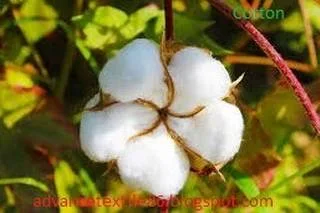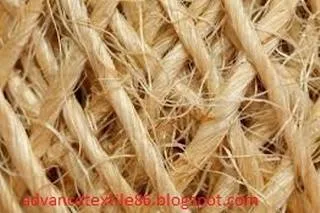Introduction
The
fiber which we get from different types of plants is called plant or bast
fiber. Bast fiber is sometimes called phloem fiber or skin fiber. It is
collected from the phloem the inner bark, or bast surrounding the stem of
certain dicotyledonous plants. It supports the phloem's conductive cells and
provides strength to the stem. Some of the most economically important best
fiber is found in agriculturally grown shrubs, such as flax, hemp, or ramie, but a plant or best fiber from wild plants, stinging nettles, and trees such as lime
or linden, wisteria, and mulberry have been used in the past. Bast fibers are
classified as soft fibers and are flexible. Fibers from monocotyledonous
plants, called leaf fibers, are classified as hard fibers and are stiff.
Plant
fiber: There are different types of plant fiber or bast fiber we found. Examples: Cotton,
flax, jute, hemp, sisal, etc.
Different types of plant fiber or bast fibers are-
A.
Cotton fiber: Cotton is a soft, fluffy staple fiber that grows in the boll or
protective field, around the seeds of the cotton plant of the genus Gossypium
of the Mallow family Malvaceae. The fiber is almost pure cellulose. Under
natural conditions, cotton balls will scatter the seeds.

The plant is a shrub native to tropical and subtropical regions of the world,
including the United States, Africa, Egypt, and India. The big diversity of
wild cotton species is found in Mexico, followed by Australia and Africa.
Cotton was raised independently in the old and new worlds.
Current
estimates for world production are about 25 million tons or 110 million bales
annually, accounting for 2.5% of the world's arable land. India is the world's
largest producer of cotton. The United States has been the largest exporter for
many years. In the United States, cotton is usually measured in bales, which
measure approximately 0.48 cubic meters and weigh 226.8 kilograms.
B. Jute fiber:
Jute
is one of the most affordable natural fibers, and second only to cotton in
quantity and variety used. Jute fibers are mainly composed of plant materials
cellulose and lignin. It falls into the category of bast fibers with kenaf,
industrial hemp, flax (linen), ramie, etc. The industrial term for jute fiber
is raw jute. The fibers are white-brown and 1-4 m long. Jute is also called
golden fiber for its color and high cash quality.
Jute
plants require simple alluvial soil and standing water. The climate suitable for
growing jute (warm and wet) is presented during the rainy season by the monsoon
climate. Temperature 20˚C to 40˚C and relative humidity 70% to 80% optimal for
successful cultivation. Jute requires 5-6 cm weekly rainfall at the time of
sowing and more. Soft water is required for jute production.
C. Hemp fiber: Hemp
is a variety of Cannabis sativa plant species that are grown specifically for
the industrial use of its products. It is one of the fastest-growing plants and
it was one of the first plants to be spun into usable fibers 50,000 years ago.
It can be modified in a variety of commercial items, including paper, textiles,
clothing, biodegradable plastics, paints, insulation, biofuels, food, and
animal feed.
Although
both cannabis and industrial flax as drugs originate from the cannabis Sativa
species and contain the psychoactive ingredient tetrahydrocannabinol (THC),
they have different strains with different phytochemical compositions and uses.
Hemp has a lower concentration of THC and a higher concentration of cannabidiol
(CBD), which reduces or eliminates its psychological effects. The legality of
industrial hemp varies greatly between countries. Some governments control the
concentration of THC and only allow hemp that is bred with a particularly low
THC content.
D.
Sisal fiber:
The
sisal fiber is traditionally used for ropes and yarns and has many more uses
including paper, cloth, footwear, hats, bags, carpets, geotextiles, and
dartboards. It is used as a fiber reinforcement for composite fiberglass,
rubber, and cement products.
E. Linen
or Flax fiber: Linen is a bast fiber. Flax fibers
vary in length from about 25 to 150 mm and average 12–16 micrometers in
diameter. There are two types: short fiber for thick fabrics and long line
fiber for long fabrics. Flax fibers are usually characterized by their "nodes"
that add flexibility and texture to the fabric.
The cross-section of the linen fiber
is made up of irregular polygonal shapes that contribute to the coarse texture
of the fabric. Linen fabric feels cool to the touch, a phenomenon that indicates
its higher conductivity. This makes the smooth, finished fabric lint-free and
softens as it washes. Linen can degrade in a few weeks when buried in the soil.
Linen is more biodegradable than cotton.
Uses of plant or bast fibers
Plant or bast fibers are processed
for use in carpet, yarn, rope, geotextile, traditional carpets, hessian or
burlap, paper, sacks, etc. Bast fibers are also used in the non-woven, molding,
and composite technology industries for the manufacturing of non-woven mats and
carpets, composite boards as furniture materials, automobile door panels and
headliners, etc. Where no other source of tanbark has been found, it has also
been used for tanning leather.












0 Comments